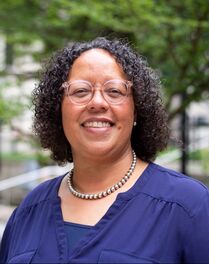Dr. Ellis writes, “I began my career as a teacher, and soon discovered an interest in administration. I have directed programs in settings as varied as the US Virgin Islands Department of Education and DePaul University Center for Urban Education. I have also served as principal and superintendent for K-12 public schools.”
Prior to joining Lab, Dr. Ellis’s multi-faceted career including working internationally as a Peace Corps Country Director in Suriname, Jamaica, and Ghana. Welcome Dr. Ellis!
0 Comments
Why was this head hired?
Competency: Assess the present, understand the past, and design for the future The National Association of Independent Schools (NAIS) has done exceptional research on why boards hire heads of school. NAIS uses the “jobs to be done” methodology to understand why boards hire a specific head of school and what that means for the work of the head in that school. The three jobs can be classified as: 1) replacement of the former head of school to turn around a major component of a school (enrollment, fundraising, curriculum, etc.); 2) continuation of the strategy set forth by the prior head of school; 3) offer a new perspective and suggest changes “so we can maintain our relevance while still executing our school’s existing vision.” Academic Leaders might think of this a wholesale change, continuation of where we were going, and tweaks around the edges. It is imperative for Academic Leaders to know which job the head was hired for, so that the Academic Leader can be in sync with the head’s priorities (and not, at worst, have priorities misaligned). What’s essential for the new head to know about my work? Competency: Maintain integrity to mission for the academic program Gone are the days when the head of school is also the chief academic officer. The role of the head of school has changed dramatically over the last twenty years, with trends accelerated by COVID. These days, the head of school must spend much more of their time in communications, governance, organization strategy, legal work, and financial matters. Put another way, the head of school work to maintain overall organizational adherence to the mission, meaning that you, Academic Leaders, are the linchpin to maintaining adherence to the mission for the academic program. The head of school can no longer know everything about the academic program, so you must distinguish between what is essential for the head to know and what is nice to have information – they will depend on you for that. What relationships does the head of school need to know about? Competency: Build and support trusting relationships We all know that independent schools are relationship driven institutions, so it is important for a new head to understand the key relationships and begin to build trust quickly. As an Academic Leader, you need to consider: Who do I need to introduce the new head to in order for them to find success quickly? And, what landmines exist for them to avoid? Remember that a new head has little knowledge of the context they are entering, and, at worst, some people will try to exploit their lack of context for their own gains. Set the new head up for success by making key introductions and explaining why the relationships are so important, and the head will be grateful to you for their (hopefully) long tenure on campus. When we conducted our research on the needs of Academic Leaders, we learned that we needed to base our association on competencies. What does this mean? A collection of competencies details what is necessary to perform successfully in an academic leadership role. A competency is composed of a collection of skills and a related knowledge base. A competency can be observed and is measurable. A competency can transfer to a new situation or scenario. So how does this translate? We realized that creating competency profiles for Academic Leaders, iterating and learning from the process, and then adjusting the competencies based on feedback, would give the organization a significant advantage when it came to launching an association and ensuring that the value provided met members’ needs as they sought to grow in their leadership capacity. As we launched our first year, we’ve offered 15 courses for peers to build skills and make connections that are sure to last into the next school year and beyond. We’re looking forward to strengthening those connections via our member online community, meetups, and cohorts.
|
Don't miss our weekly blog posts by joining our newsletter mailing list below:AuthorsBrad Rathgeber (he/him/his) Archives
July 2024
Categories |




 RSS Feed
RSS Feed